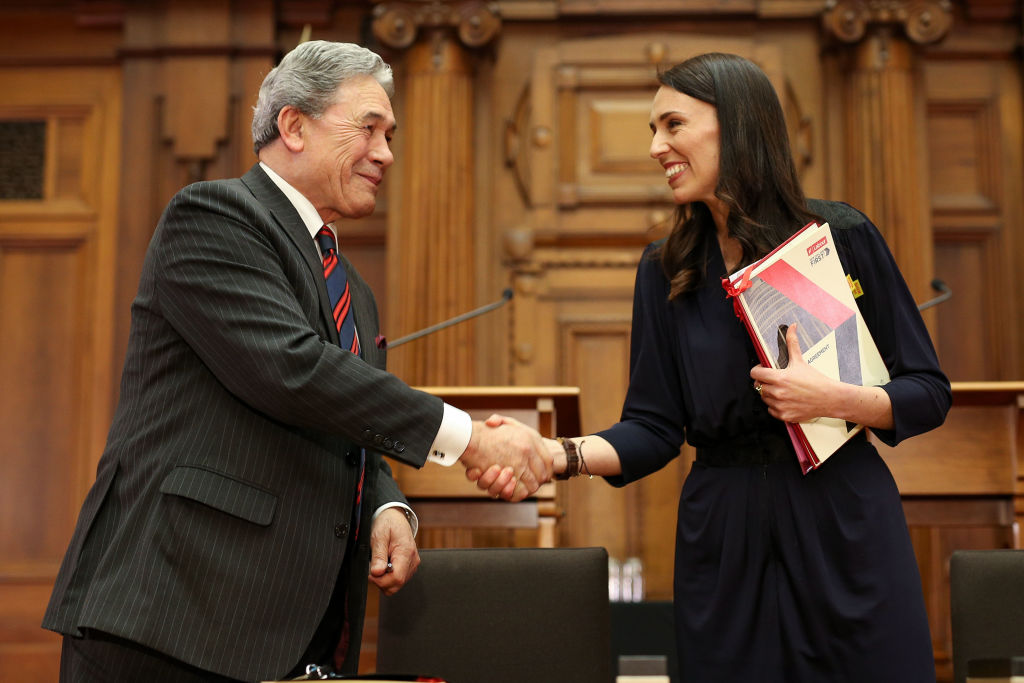The post-election coalition negotiations that New Zealand First conducted with both the New Zealand Labour and New Zealand National parties was vigorously followed by both the media and the public. There were various speculations cast on the content of those negotiations, ranging from farcical (David Seymour claiming Winston would drop all policy demands for the Prime Ministership) to implausible (all parties to form a Grand Coalition to keep Winston out).
With the Rt. Hon. Winston Peters announcing his decision to form a coalition with the NZ Labour Party on the 19th of October, it became hotly anticipated what the terms of that deal entailed. After several weeks of anxious waiting for Peters to make his coalition decision, the public – and the media – were now impatiently waiting for the coalition agreement to be made public.
The outcome of the Labour-NZ First negotiations was finally announced, and contrary to what his naysayers would say the biggest wins achieved by Winston and NZ First were in the way of policy rather than the “baubles of office”.
The biggest winner of the coalition agreement was undoubtedly the environment, with a “Billion Trees Planting Programme” and a Zero Carbon Act announced as part of the deal. Those uninitiated with the ethos of New Zealand First would frequently question our commitment to the environment, the content of the Coalition Agreement should put those false accusations to rest.
Aside from those two policies, the coalition agreement also placed a commitment for the government to transition their vehicle fleet to become emissions-free by 2025/26. A tyre stewardship fund was also to be set-up, which is vital to ensure an environmentally-friendly method of disposing of our rubber tyres. True to their pre-election promise of being opposed to the use of 1080, the coalition agreement outlined a provision to invest in piloting alternatives to the use of this poison.
After the environment, regional New Zealand was the next big winner with a $1-billion dollar fund established to spur regional growth. This billion-dollar fund would be managed by the newly established role of “Minister for Regional Economic Development“, which would be given to the Hon. Shane Jones. Being a native son of the Te Tai Tokerau (Northland region), he would know first-hand the abhorrent neglect of the regions and would have an idea of suitable projects to inject funding into.
Part of the proposed project to rebuild the regions would be to revitalize rail links between them and the large cities, a much preferred alternative over the very expensive highways which the National government of the previous nine years prioritized. The biggest priority was given to the rail link to Northland, which was also an election campaign bottom-line for New Zealand First.
Keeping true to his word pre-election, the re-entry into the Pike River Mine was also secured. This should hardly surprise any, given that both NZ First and Labour shared the same sentiment of re-entering the collapsed mine. It is another reason for regional NZ to celebrate.
As one might expect from NZ First, one of its core voter base – the superannuitants – also received a major boost from the coalition negotiations. The age of super would remain firmly at 65 years, but in addition their SuperGold cards would be upgraded into a smartcard capable of more functions such as discounts in retail stores and one free eye test per year.
Immigration also saw major changes, with the government pledging to crackdown on migrant exploitation in the tertiary education sector by removing low quality international education courses. Students should also celebrate the pledged funding of counselors in primary schools and free driver training to all secondary school pupils. The Mental Health Commission was also re-established to improve our mental health system.
It is clear that NZ First’s biggest win in their deal with the Labour Party was in terms of policy, but they also made gains in government positions. Party Leader Winston Peters was to become the Deputy Prime Minister, as well as the Minister for Foreign Affairs, State Owned Enterprises and Racing.
Deputy Leader Ron Mark was appointed Minister of Defence and Veterans’ Affairs, while Tracey Martin was given the Ministerial portfolios of Children (Oranga Tamariki), Seniors and Internal Affairs. Party newbie but former Cabinet Minister Shane Jones was given a hefty to-do list, in addition to Regional Economic Development he would also be the Minister of Forestry, Infrastructure and Associate Minister of Finance and Transport. Meanwhile, Fletcher Tabuteau was given the Under-Secretary position for Regional Economic Development and Foreign Affairs.
How this line-up would perform is an exciting prospect that we shall see in the next three years. Nonetheless, the policy concessions made by NZ First underlines their biggest priority which was to develop the regions and to preserve our national patrimony for our future generations.

